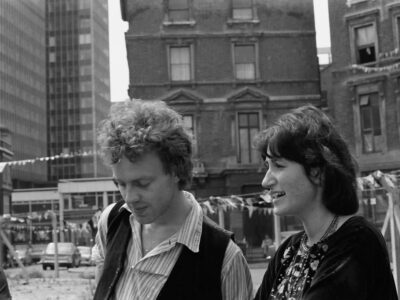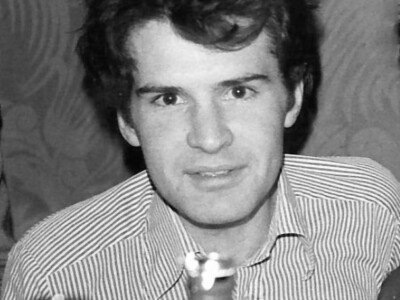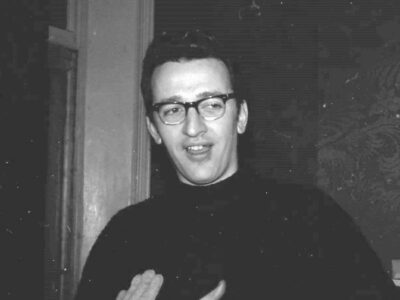as told to Patrick Allen
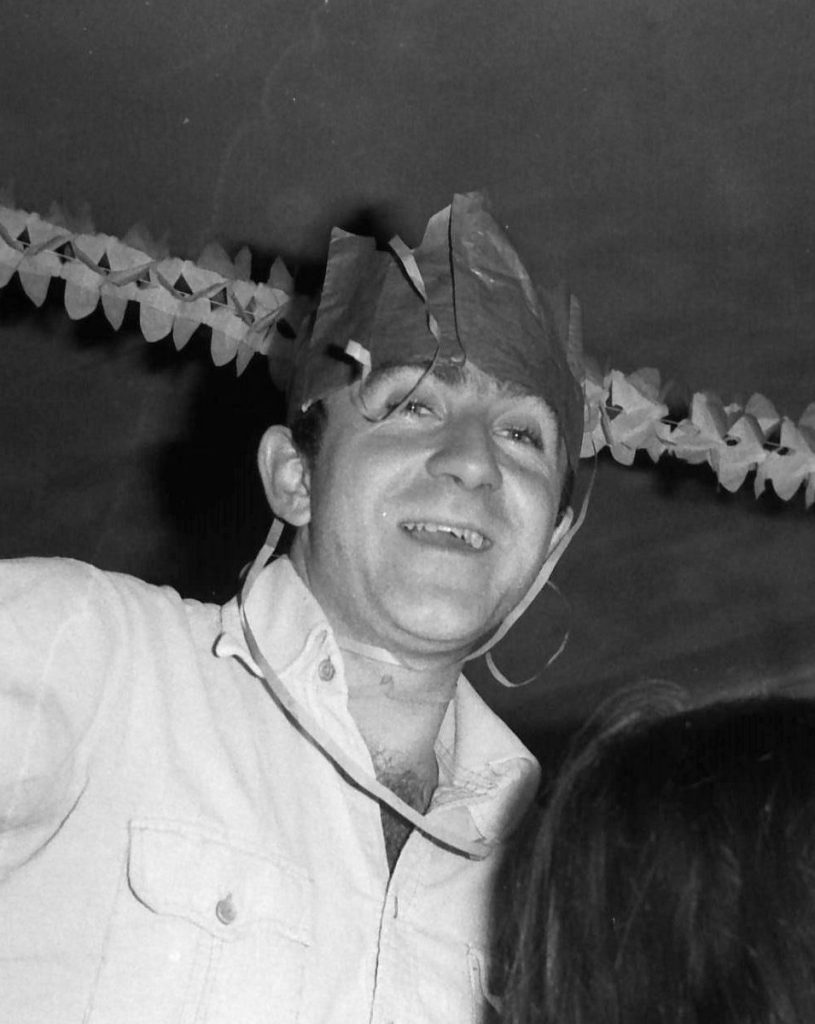
I took my first degree in sociology at Bath University, then went to Manchester University to complete an MA. in Politics. I followed this with a one-year teaching post at Preston Polytechnic in Lancashire. In 1976 I was offered a PhD studentship at LSE and moved to London where I found temporary accommodation in Shepherd’s Bush.
I had heard about plans to set-up an independent left-wing magazine and got in touch with one of the first movers of the idea, Dave Clark. Keen to get involved, I went to meet him at the magazine office – a squat in a disused shop at 155a Drummond Street, nearly opposite the well-known army surplus store, Lawrence Corner. I decided to join the project. The first issue of the Leveller came out in November 1976 and it continued to be produced from Drummond Street for much of its existence.
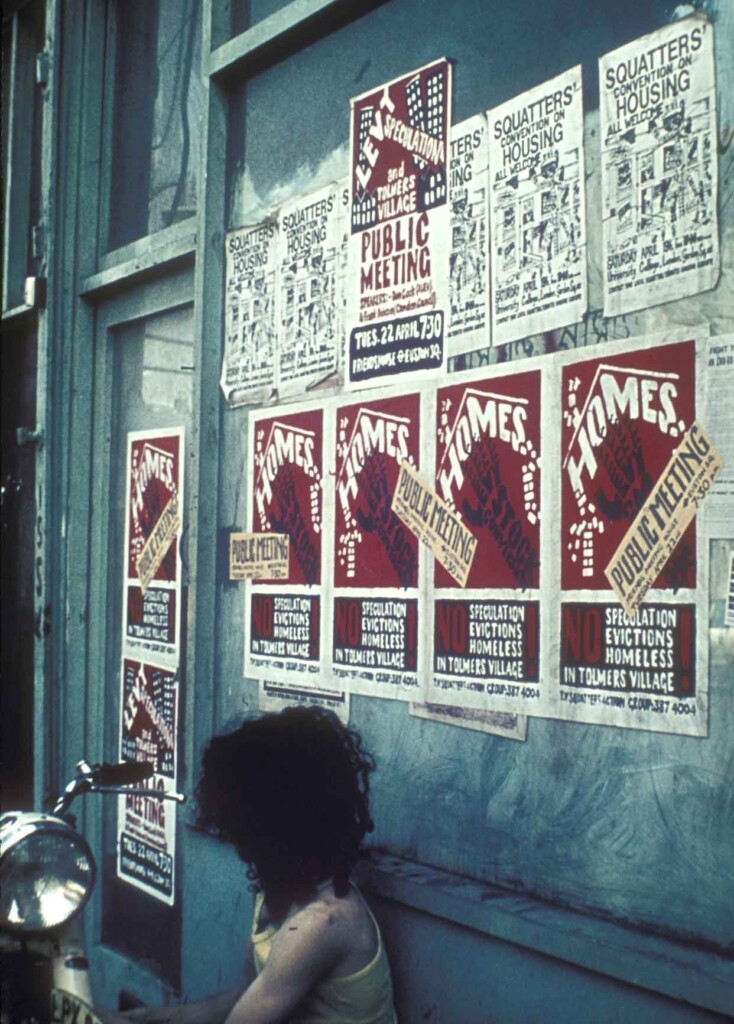
Meanwhile my very good friend Sacha Craddock (who I had met in the art room on my first day at the College of Further Education in Oxford in 1970) happened to be living round the corner from Drummond Street in a squat at 12 Tolmers Square. I made contact, said I had just moved to London, and was looking for somewhere to live. She said, ‘come and live with us in number 12.’
So, this was September 1976. I took the ground floor front room in number 12. It was in good condition, so I didn’t have to do too much to it. In the house there were Sacha, Cora, Jamie, Rod, Colin with Patrick next door across the balcony in number 11.
There were a lot of other people passing through. I stayed until the very end of Tolmers Square in September 1979 when Camden took back the Square and demolished it.
In my first two years at Tolmers I worked on my PhD on the sociology of Russian revolutionary art between 1905 and 1928. At the same time, I was very involved with the Leveller magazine which went from strength to strength. In the summer of 1977, I took three months off and went on a trip with my friend Simon Howard where we traced the White Nile from its mouth in Alexandria all the way to the source at Lake Victoria and on into Rwanda and Burundi – with side trips to the islands of Zanzibar and Lamu.
In 1979 I got an offer of a full-time lectureship at North London Polytechnic, and I decided to take this rather than carry on with the PhD – a gamble that paid-off and launched my academic career in London.
Tolmers memories:
Cooking rotas
We all took turns to cook communal meals and it was quite competitive. Sacha or Jamie would turn up with a dreadful fatty piece of meat found in the back of some market and cook it with prunes. (Fat and prunes Colin called it).
New Year’s Eve 1978
It was cold and snowy and Brian Rose Smith, a solicitor friend of Sacha’s called round. He took us through thick snow in his van – me, Sacha, Mark Ferguson and Oscar, some in our dressing gowns – to the French House pub in Old Compton Street. There we found the owner Gaston and a Canadian mercenary who befriended us and ended up staying on the sofa in Tolmers for some days. We were careful not to hurry him out…
Football in Regents Park
I remember going for intensive games of football in Regents Park. Barry Shaw tackled hard, really hard, and always seemed to kick my ankles.
Sing-songs
There were many evenings with sing-songs at number 12 with Jamie at the piano – favourites included songs from The Great American Songbook, My Fair Lady, and the Cole Porter collection.
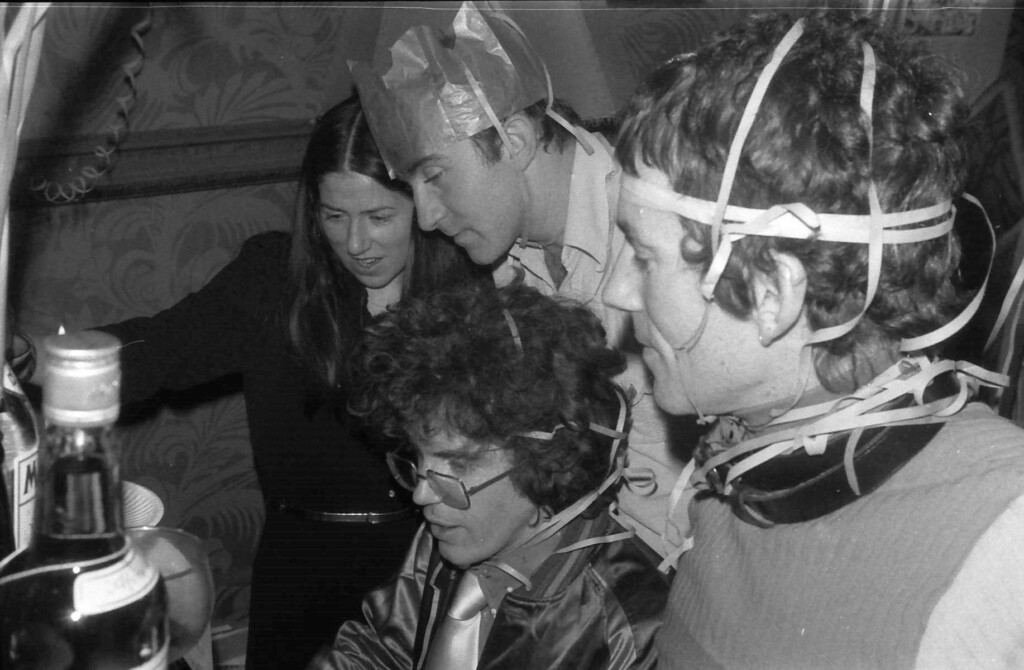
Laughter
And I remember one evening we were getting stoned and Jamie was wrapped up in a sleeping bag. He was obsessed with the label on the sleeping bag called Palomine and just kept repeating this name in stoned hysterical laughter – one of the funniest (unfunny) things – we were in tears all night.
Photographer
I was also into photography. Patrick next door at no 11 had a dark room and taught me about film developing and printing.
The Leveller
With Dave Clark and others The Leveller magazine took-off and Issue No 1 came out in November 1976. It was run by an open collective and some of the early members became good friends of Tolmers Village and of mine: Ian Walker, John Knepler, Cherrill Hicks, David Brazil, Tony Nichols, Rose Shapiro, Terry Ilott and many others.
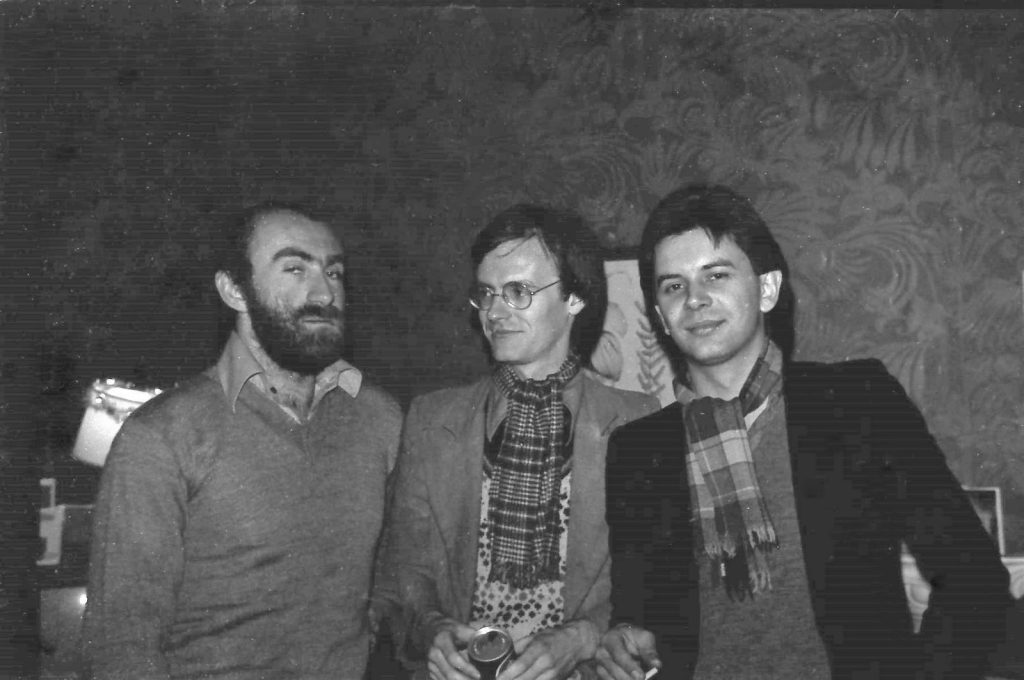
One of our dramatic covers involved a television in a dustbin with the news still on. We used the TV and dustbin from 12 Tolmers Square and Tony Nicholls, who was professional photographer, photographed it and designed the cover.
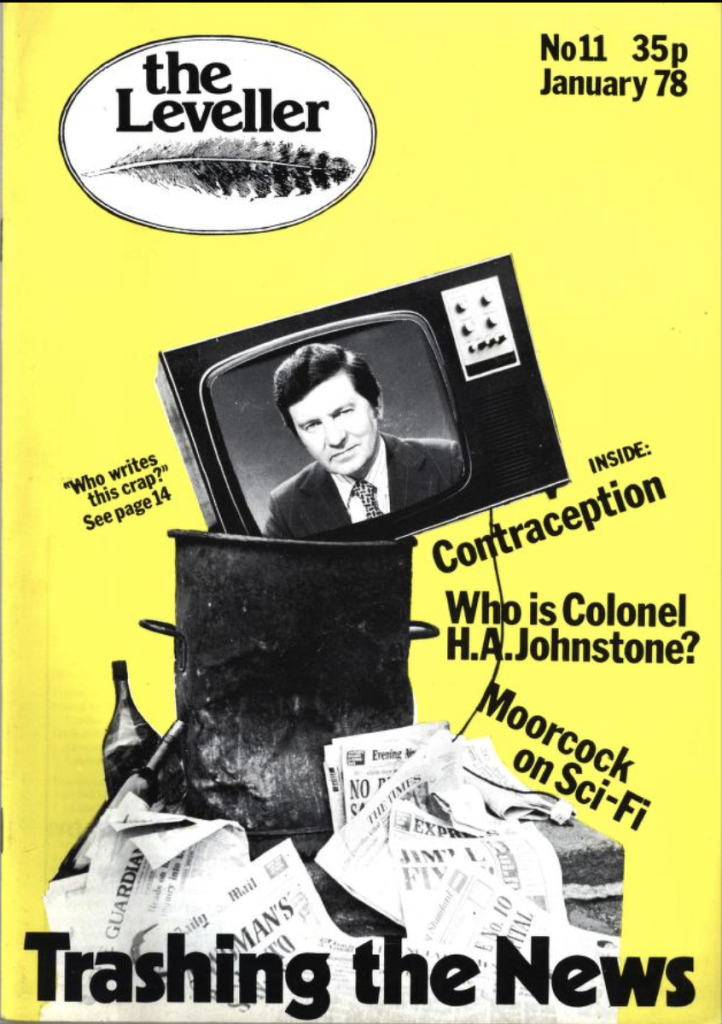
The magazine became incredibly popular and soon we were outselling the New Statesman and New Society. It was distributed nationally by Full-Time Distribution in Clerkenwell and in London by Moore Harness Ltd, and typeset by Red Lion Typesetters at Bread n’ Roses. We also sold it on the street and at Anti-Nazi League demonstrations and at Rock Against Racism concerts. At one point, we were selling over 20,000 copies per issue, monthly.
The high point was when we were the first story on the BBC 9 o’clock news about Colonel B, in the official secrets case. We named Colonel B! Also we were in the notorious Aubrey, Berry, Campbell case. Our costs were low – we had no overheads like rent and all the writing and production was done by collective members for free.
I did quite a lot of writing , mainly on cultural politics, doing interviews with John Berger the art critic, Raymond Williams the Marxist writer and academic, and Bernardo Bertolucci the film director. It was an amazing project. We had quite an impact at the time on left politics and culture.
Steve Bell (later famous in the Guardian) started off in the Leveller with the cartoon strip Lord God Almighty. Many years later I was pleased to give him an honorary doctorate from The University of Brighton where I was then the Dean.
As the Leveller progressed, differences developed amongst those producing it about its future political direction. A final split happened in the living room at Great Russell Street (‘GRS’ where I went to live after Tolmers) between some who felt we were becoming too concerned with cultural politics and others who felt it should be more traditional left-wing and working-class-oriented. Those of us who had been concerned more with cultural politics, with feminism and anti-racism and lesbian and gay rights left and launched a new publication called Desire. It sought to capture the emotional content of politics. Unfortunately, it was ahead of its time, and we didn’t get the marketing right or really know our audience – it folded after the first issue!
The other group from the collective went off with the Leveller title and they continued to produce it for about another year, but it was all down-hill from that point on, and then it folded.
The end of Tolmers – September 1979
We were first offered a flat in Crowndale Road by Camden in a block. I went to see it and, irony of ironies, unbeknownst to Camden, it was squatted.
Then we were offered a three-bedroom flat in Blashford on Adelaide Road, but it was too small for all of us from 12 Tolmers. Then we found 89 Great Russell Street, a 5-story terraced house next to the British Museum and managed to take an assignment of the lease of the whole house. I was the official tenant and shared the house and all expenses with Cora, Sacha, and Jamie, just like in Tolmers – we were also joined by Sally, Sacha’s mother. So we carried on as before – communal living, people coming and going, big meals and sing songs round the piano.
And that continued until I moved to Stoke Newington in 1989 and later to Brighton with my partner.
Did Tolmers change my life?
Without a doubt. I had not experienced communal living before so this was a first. Another first was starting a new left magazine. I had come from a working class background and my intellectual awakening had been managed through organised politics on the far left. I had joined the Socialist Workers Party (SWP) selling newspapers on the street so had a critical grasp on politics and society but hadn’t experienced such a range of cultural diversity. I had never experienced the breadth of people I encountered at Tolmers – it broadened my experience and outlook. I had had glimpses of it in 1971 at St Frideswides, Sacha’s family home in Oxford, with her friends and family – her parents, Sally and John Craddock, had become my parental substitutes.
Tolmers was an eye-opener for me – it was crazy. My years in Tolmers and the first years in GRS were really some of the best and happiest of my life. Squatting and the fact that it didn’t cost anything made a big difference, as a student I had a grant for my PhD but otherwise I wouldn’t have been able to afford to live in London so it was a godsend.
Tolmers was life changing in fundamental ways, it took me into a whole different cultural milieu which was exciting, challenging and fun. It enabled me to develop in the way that I have since. It provided a back-drop to think about life and the world differently.
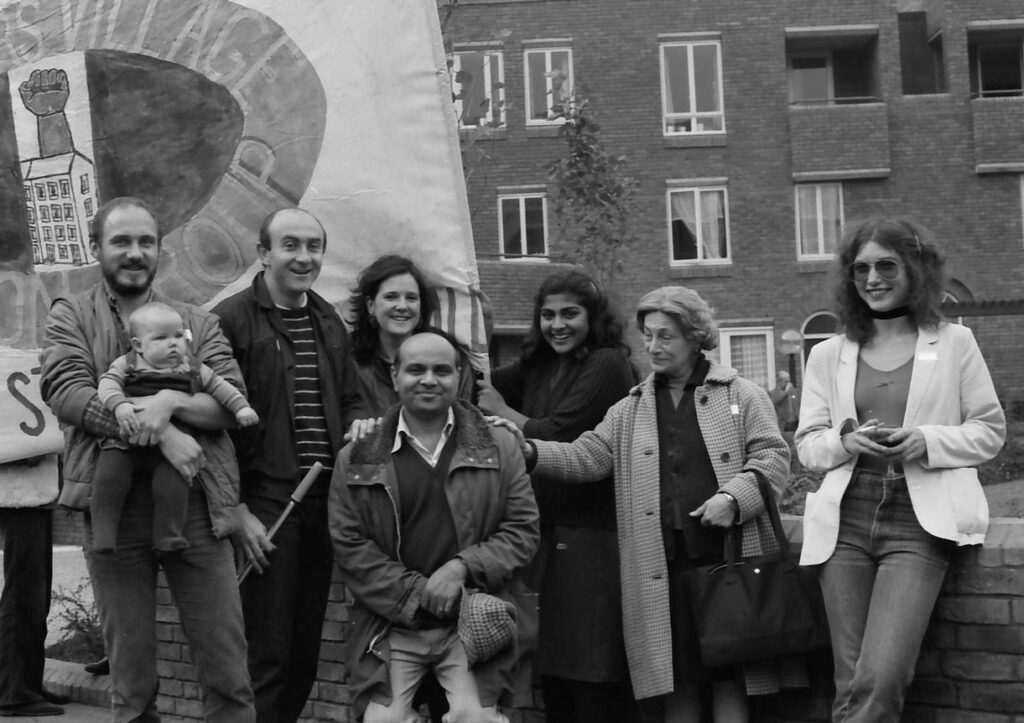
Read more about the author Dave Taylor
More stories
Bourgeois squatting
by Corinne Pearlman
It seemed like the right way to live. It felt very comfortable for me, living with a lot of people. I’ve got various lives in different places, but that communal life is really important.
Second-hand geyser does the job
by Colin Ferguson
I learned a lot of DIY skills. It was amazing to find out you could do it.
Singsongs, meals and Marxism
by Jamie Gough
He said “those two houses are still empty, nobody has squatted them, why don’t you come and live there?” I can still remember that moment.
Wait until the head teacher sees this
by Oscar Gregan
I skimmed though the paper looking for the photo. I could not find it! I was just about to return the paper when I noticed the front page.
Ringside seat
by Patrick Allen
The flat had a panoramic view over the square so you could see the comings and goings of everyone and the balcony was big enough to sit out on.
Squatting law expert
by David Watkinson
“My learned friend has a whole army of people to assist him, while I have only my solicitor and a clerk”.
